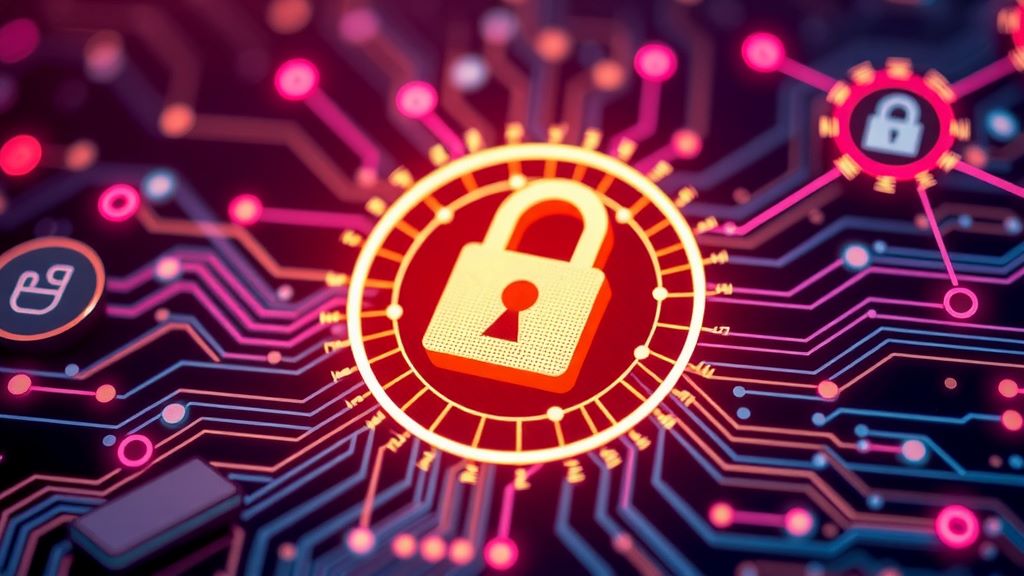The Internet of Things (IoT) Security refers to the interconnection of physical devices to the Internet, enabling them to collect and share data. This technology has transformed how we interact with our environment, from smart homes to connected cities. However, with the growing adoption of IoT, significant IoT Security concerns have also emerged. This article will explore the primary security challenges facing IoT and offer solutions to mitigate these risks.

What is the Internet of Things?
IoT encompasses a wide variety of devices, including smart thermostats, IoT Security cameras, appliances, and transportation systems. These devices are equipped with sensors, software, and network connectivity that allow them to communicate and operate autonomously. For example, a smart thermostat can learn a household’s heating habits and automatically adjust the temperature to save energy.
Security Challenges in IoT
- Vulnerable Devices: Many IoT devices come with little to no security protection. They are often designed to be affordable and user-friendly, which means security features are often neglected. This makes them attractive targets for attackers, who can exploit vulnerabilities to gain access to private networks or launch Distributed Denial of Service (DDoS) attacks.
- Lack of Software Updates: Many IoT devices do not receive regular IoT Security updates, leaving them exposed to new threats. Unlike computers and smartphones, where users are notified about updates, many IoT devices lack this mechanism. This makes it difficult to protect devices against known vulnerabilities.
- Poor Password Management: Many users do not change the default passwords of their IoT devices. This makes unauthorized access easier, as attackers often have access to lists of default passwords. Weak passwords or reusing passwords across devices also heightens security risks.
- Interconnectivity of Devices: The interconnected nature of IoT devices can propagate an attack. If one device is compromised, attackers can gain access to other devices on the same network, expanding their reach and potential damage. This is due to the fact that many IoT devices lack robust access controls or adequate network segmentation.
- Data Privacy Concerns: IoT devices collect large amounts of personal data. Without proper protection, this data can be exposed, raising privacy risks. The absence of clear regulations regarding data handling complicates the situation further.
Solutions to Improve IoT Security
- Implement Robust Security Measures: IoT device manufacturers must incorporate security measures from the design phase. This includes using encryption to protect data both in transit and at rest, as well as implementing multi-factor authentication for accessing devices and networks.
- Automatic Updates: It is essential that IoT devices have the capability to receive secure and automatic software updates. Users should be notified of these updates to ensure they are installed. This will help protect devices against known vulnerabilities and emerging types of attacks.
- User Awareness and Education: Users must be educated about the importance of security in IoT. This includes changing default passwords, using strong and unique passwords, and understanding how their devices operate within their network. Education and awareness are crucial in preventing attacks.
- Network Segmentation: Implementing network segmentation can help contain any attacks that occur. Separating IoT devices from other devices on the network, such as computers and smartphones, reduces the risk of a single attack compromising the entire network. This can be achieved through the use of separate Wi-Fi networks or VLANs.
- Security Monitoring: Organizations should implement monitoring systems to detect unusual activities within their IoT networks. This includes using security analytics tools that can identify suspicious traffic patterns and alert administrators to potential security incidents.
The Importance of Regulation
Regulating security in IoT is essential to address the inherent vulnerabilities of these devices. Regulations should establish minimum security requirements for IoT devices, including the need for regular updates and appropriate data privacy management. Initiatives like the IoT Cybersecurity Improvement Act in the U.S. aim to set standards for IoT device security, which can help mitigate associated risks.
Conclusion
IoT security is a critical challenge that requires attention from manufacturers, users, and regulators. As more IoT devices become integrated into our daily lives, the need to protect these devices becomes increasingly urgent. By implementing robust security measures, educating users, and adopting effective regulations, it is possible to mitigate the risks associated with IoT and enjoy its benefits safely.
For more information on IoT security and how to protect your devices, you can explore resources such as the National Institute of Standards and Technology (NIST) and the Internet of Things Security Foundation (IoTSF).
